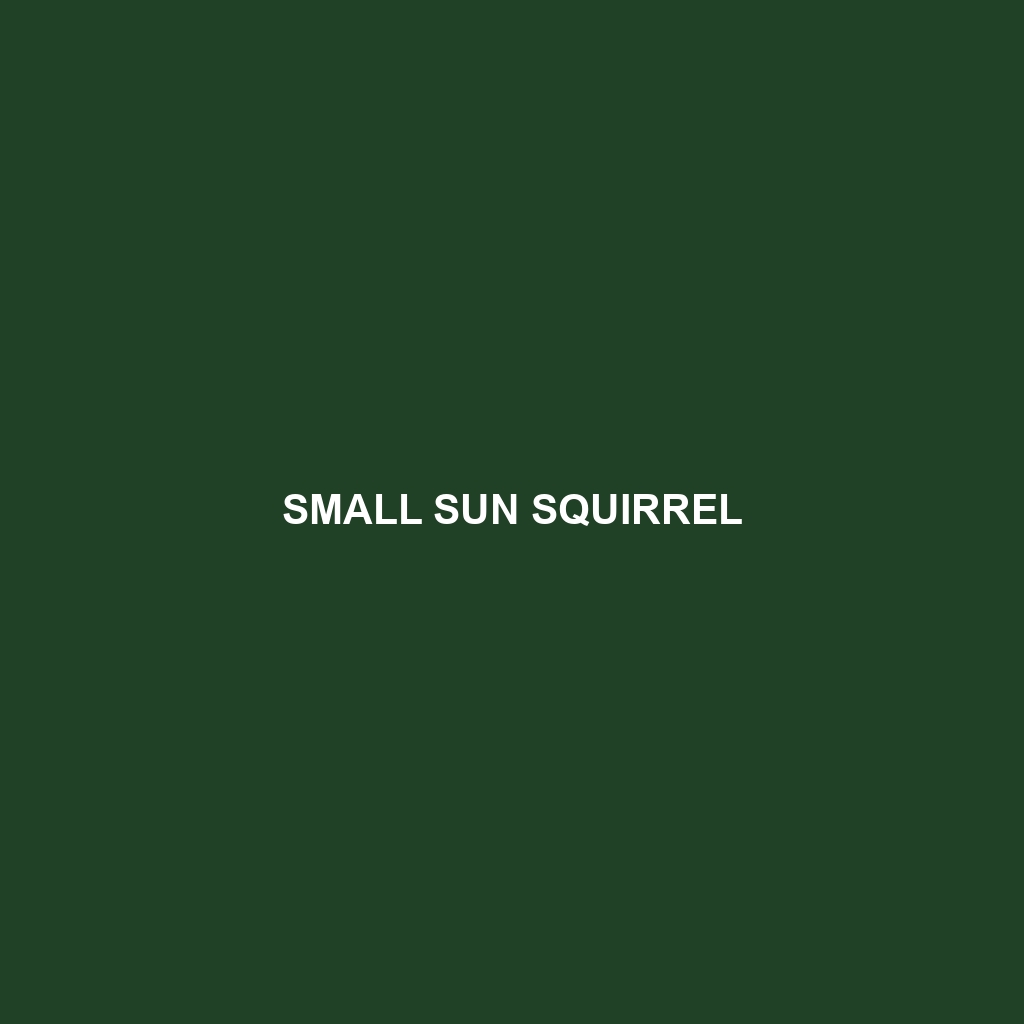Species Description: Small Sun Squirrel
Common Name: Small Sun Squirrel
Scientific Name: Heliosciurus mutabilis
Habitat: The Small Sun Squirrel is primarily found in the tropical forests of Central and West Africa. It thrives in environments rich in vegetation, including rainforests, woodlands, and forest edges. These squirrels prefer areas where they can find plenty of trees for climbing and camouflage from predators. Common geographic locations include the Democratic Republic of the Congo and surrounding nations, where dense foliage provides a suitable habitat.
Physical Characteristics: The Small Sun Squirrel typically measures about 25 to 35 centimeters in length, with a bushy tail that can be an additional 20 centimeters long. Its coat is an eye-catching blend of golden-yellow and russet hues, providing excellent camouflage among the leaves. Notable features include large, expressive eyes and distinct tufted ears, giving it a cute yet alert appearance. Adult squirrels weigh between 200 to 300 grams, making them relatively small compared to similar species.
Behavior: Small Sun Squirrels are diurnal, engaging actively during the day. They are known for their playful demeanor, often seen chasing one another or climbing trees. Their agility in the trees is remarkable, allowing them to leap from branch to branch with ease. Socially, they are somewhat solitary but can be seen in small groups during feeding times. Vocalizations, including chirps and whistles, serve as communication tools among individuals.
Diet: The diet of the Small Sun Squirrel primarily consists of fruits, nuts, seeds, and insects. They exhibit foraging behavior, skillfully climbing trees to find their preferred foods. This species plays a critical role in seed dispersal, aiding in forest regeneration. Foraging primarily occurs in the canopy, where food availability is rich, thus highlighting their adaptation to arboreal living.
Reproduction: Small Sun Squirrels typically breed during the wet season, which varies by region but generally occurs between March and June. The females give birth to two to four offspring after a gestation period of approximately 45 days. Young squirrels begin to venture out of the nest at about six weeks old and are weaned by the end of the third month. Maternal care is essential during this period, with females often leading their young in foraging activities.
Conservation Status: The Small Sun Squirrel is currently classified as “Least Concern” by the International Union for Conservation of Nature (IUCN). However, habitat loss due to deforestation and logging remains a significant threat. Conservation efforts are essential to ensure that their populations remain stable and that their habitats are preserved for future generations.
Interesting Facts: One fascinating aspect of the Small Sun Squirrel is its ability to rotate its ankles, allowing it to climb down trees headfirst—a great adaptation for evading predators. They are also known for their curious nature, often investigating new objects in their environment, making them a delightful presence in the forest.
Role in Ecosystem: As a crucial part of its ecosystem, the Small Sun Squirrel contributes to seed dispersal, facilitating forest growth. Their feeding habits help maintain the health of their habitat by promoting biodiversity. Additionally, they serve as prey for larger animals, further integrating them into the food web and highlighting their importance in maintaining balance within their ecological niche.
